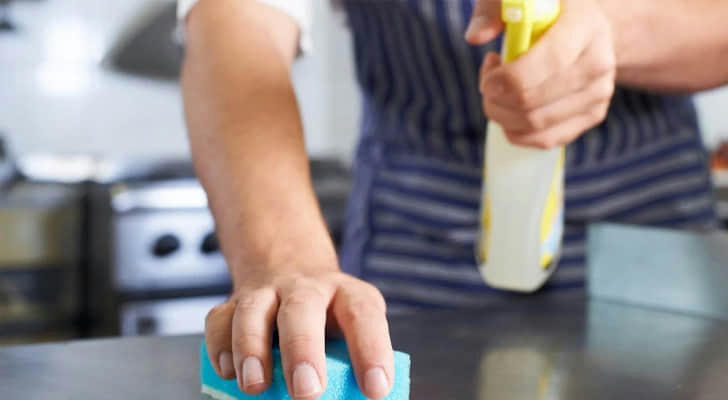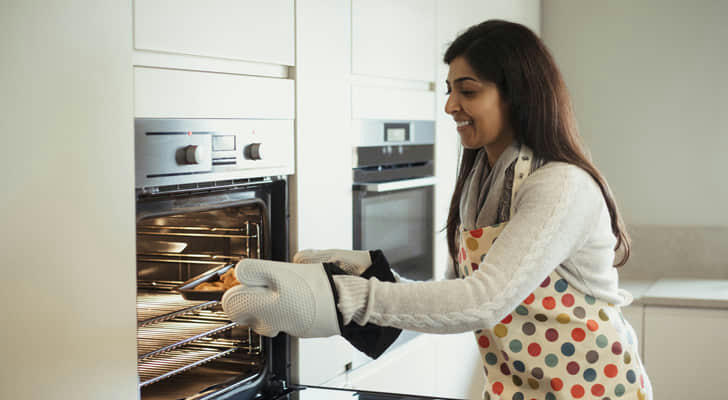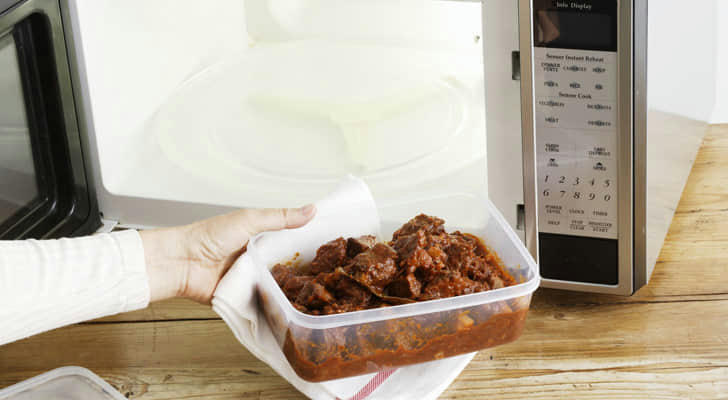Hidden Dangers in Your Kitchen: What to Watch Out For 🍽️⚠️

The kitchen is often seen as the heart of the home—where we prepare meals, gather with family, and enjoy delicious food. But did you know that your kitchen can also harbor hidden dangers? From chemicals in cleaning products to unsafe cooking practices, your kitchen can be filled with hazards that can affect your health and safety. In this article, we’ll explore common risks found in most kitchens and offer practical tips on how to avoid them.
1. Dangerous Chemicals in Kitchen Cleaning Products 🧴
The Hidden Threat of Household Cleaners
Many household cleaning products contain harmful chemicals like ammonia, bleach, and phthalates, which can be toxic when inhaled or absorbed through the skin. These chemicals are often found in products used to clean countertops, floors, and kitchen appliances.
How to Protect Yourself
Instead of relying on harsh chemical cleaners, switch to natural alternatives like baking soda, white vinegar, and lemon juice, which are just as effective at cleaning but much safer for you and your family. Make sure to always ventilate the area when using any cleaning products, and wear rubber gloves to avoid direct contact with harsh chemicals.
✅ Tip: Keep cleaning products out of reach of children and pets to prevent accidental poisoning.
2. Contaminated Food: Cross-Contamination in the Kitchen 🍗🍅
What Is Cross-Contamination?
Cross-contamination happens when harmful bacteria from raw meat, poultry, or seafood spreads to other foods, utensils, or surfaces. This is a major cause of foodborne illnesses, which can lead to stomach cramps, diarrhea, and other symptoms.
How to Prevent It
To avoid cross-contamination, separate raw foods from ready-to-eat foods in your fridge and during preparation. Always use different cutting boards and knives for raw meat and vegetables. Wash your hands thoroughly before and after handling food, and regularly clean your kitchen surfaces.
✅ Tip: Consider using color-coded cutting boards to avoid mixing raw meats with fruits and vegetables.
3. Unsafe Cooking Practices: Overheating Nonstick Pans 🍳
The Risk of Teflon and Nonstick Coatings
Nonstick cookware, especially those coated with Teflon, is convenient for cooking, but did you know that overheating nonstick pans can release harmful fumes? When heated to high temperatures (above 500°F), these pans can break down and release toxic gases that can cause flu-like symptoms and damage the lungs.
How to Cook Safely
To protect yourself, always cook on low to medium heat when using nonstick pans. Avoid preheating an empty pan, and never leave the pan unattended on a hot stove. If your nonstick pans are scratched or damaged, it’s time to replace them.
✅ Tip: Consider switching to stainless steel or cast iron pans for a safer, long-lasting alternative.

4. Old or Damaged Kitchen Appliances 🔌
The Hidden Dangers of Broken Appliances
From toasters to microwaves, old or damaged appliances can pose serious risks. Faulty wiring, broken seals, and worn-out parts can lead to electrical fires, burns, or electric shock.
How to Stay Safe
Inspect your kitchen appliances regularly for signs of damage. If an appliance is not working properly, don’t hesitate to get it repaired or replace it. Be cautious with old microwave ovens, as they can leak radiation if the door seal is damaged.
✅ Tip: Unplug appliances when not in use to prevent potential electrical hazards and save energy.
5. Expired or Improperly Stored Food 🥫
The Risk of Eating Expired Foods
While the expiration date on food packaging is a useful guide, many people overlook how long food has been sitting in the pantry or refrigerator. Eating expired or improperly stored food can lead to food poisoning, as bacteria grow over time.
How to Avoid It
Check your pantry and fridge regularly for expired items, and always follow proper food storage guidelines. Store perishable items like meat, dairy, and vegetables in the refrigerator or freezer to keep them fresh for longer. Be sure to rotate your food so older items are used first.
✅ Tip: Label your food with purchase or expiration dates to keep track of freshness!
6. Hidden Dangers of Plastic Containers 🍱
The Risks of BPA and Other Chemicals
Many plastic food containers contain BPA (bisphenol A), a chemical that has been linked to hormonal disruptions and increased risk of cancer. While some containers are labeled BPA-free, they may still contain other harmful chemicals like phthalates.
How to Protect Your Health
Switch to glass or stainless steel containers for storing food. These materials are safer, don’t leach chemicals into your food, and are more durable than plastic. If you must use plastic containers, make sure they are labeled BPA-free and never microwave food in plastic containers.
✅ Tip: Avoid storing hot food in plastic, as high temperatures can cause chemicals to leach more easily.

Conclusion: Keep Your Kitchen Safe and Healthy 🍽️
Your kitchen should be a place where you can create healthy meals and enjoy time with loved ones, but it’s important to be aware of the hidden dangers that can lurk in your cooking space. By making small changes like switching to safer cleaning products, practicing proper food safety, and maintaining your kitchen appliances, you can create a healthier environment for yourself and your family.
The key to a safe kitchen is awareness. Regularly inspect your kitchen for potential hazards, and don’t be afraid to make adjustments. With these simple tips, you can continue enjoying delicious meals without compromising your health or safety.
Stay safe, cook smart, and make your kitchen a haven of health! 🍽️⚠️
